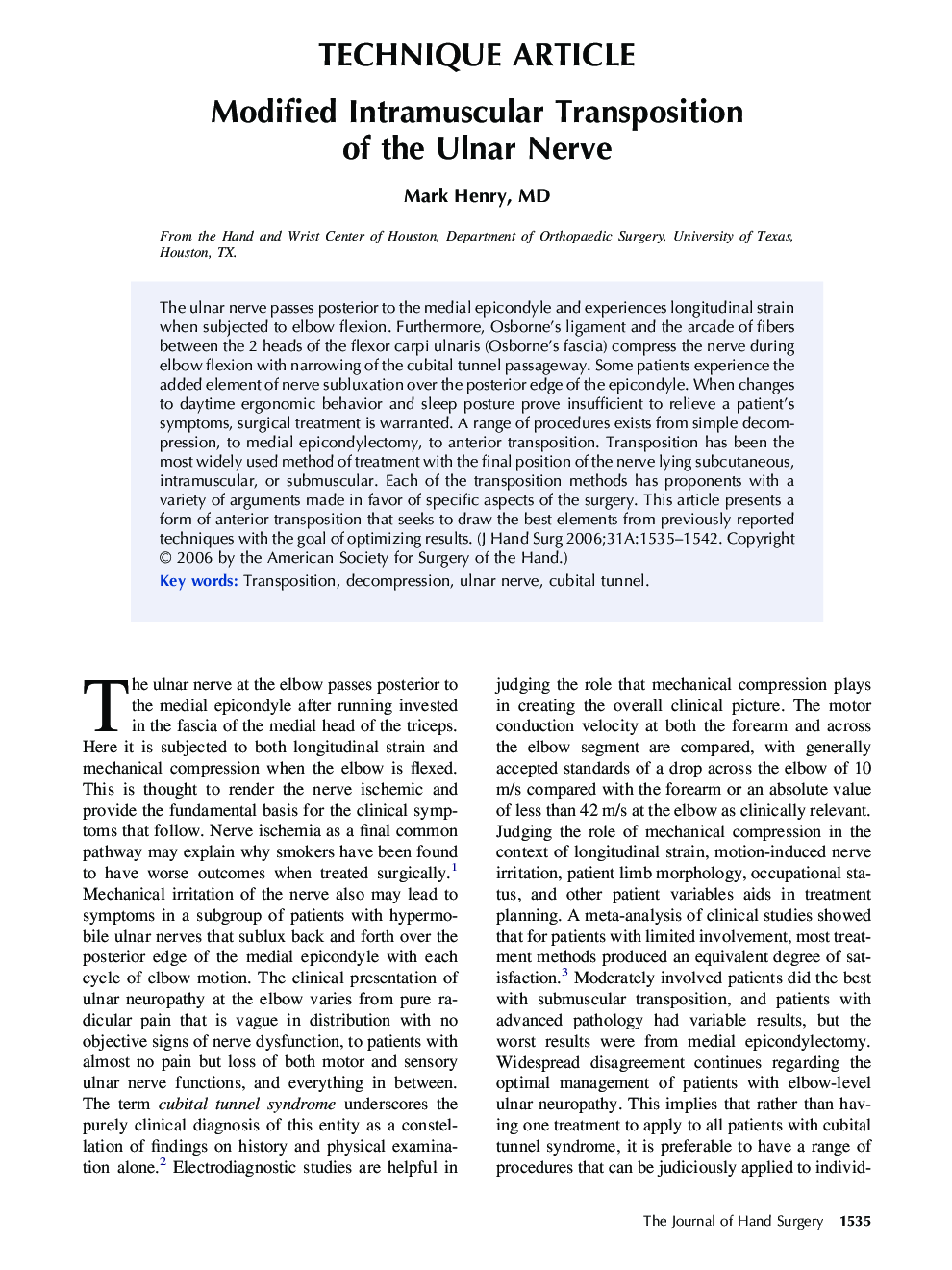| Article ID | Journal | Published Year | Pages | File Type |
|---|---|---|---|---|
| 4069142 | The Journal of Hand Surgery | 2006 | 8 Pages |
The ulnar nerve passes posterior to the medial epicondyle and experiences longitudinal strain when subjected to elbow flexion. Furthermore, Osborne’s ligament and the arcade of fibers between the 2 heads of the flexor carpi ulnaris (Osborne’s fascia) compress the nerve during elbow flexion with narrowing of the cubital tunnel passageway. Some patients experience the added element of nerve subluxation over the posterior edge of the epicondyle. When changes to daytime ergonomic behavior and sleep posture prove insufficient to relieve a patient’s symptoms, surgical treatment is warranted. A range of procedures exists from simple decompression, to medial epicondylectomy, to anterior transposition. Transposition has been the most widely used method of treatment with the final position of the nerve lying subcutaneous, intramuscular, or submuscular. Each of the transposition methods has proponents with a variety of arguments made in favor of specific aspects of the surgery. This article presents a form of anterior transposition that seeks to draw the best elements from previously reported techniques with the goal of optimizing results.
